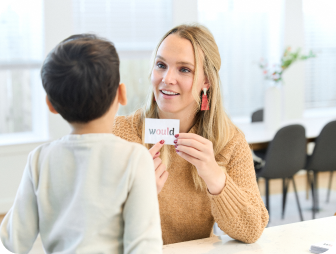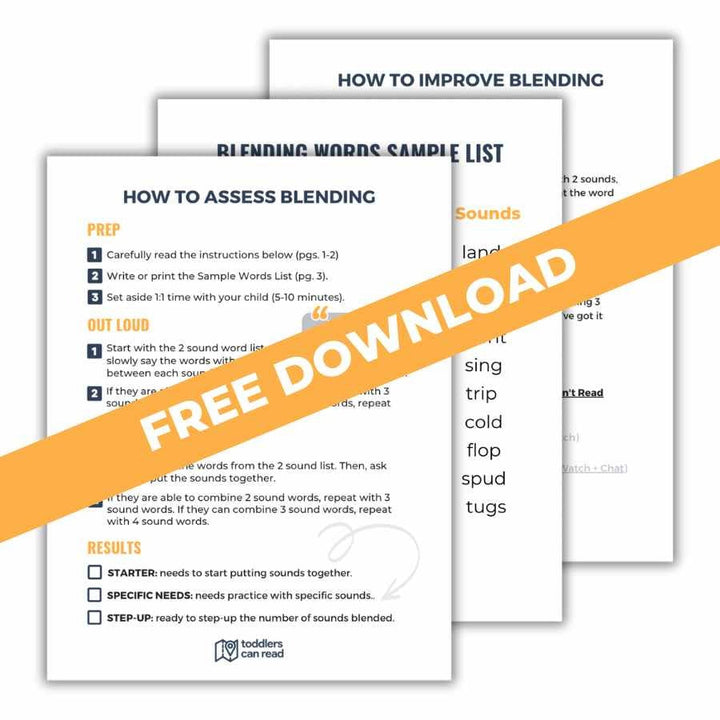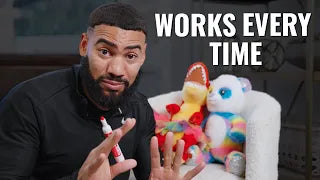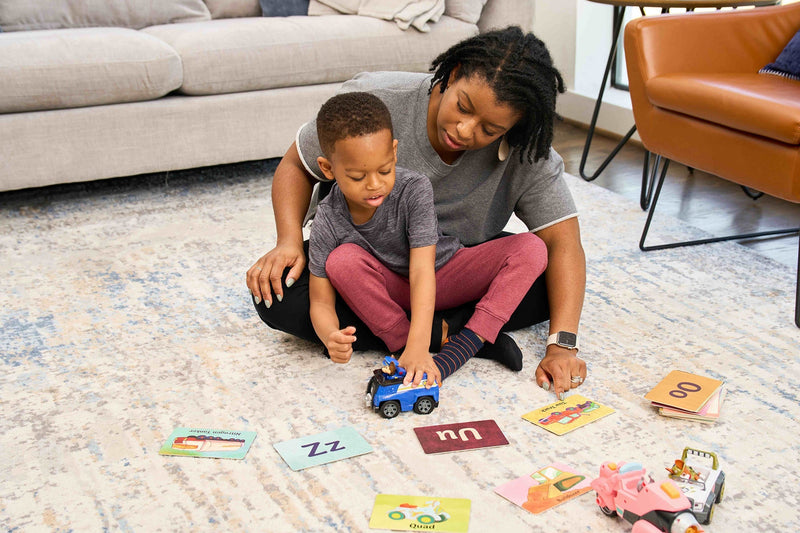Teaching your little one their letter sounds is surprisingly simple. Honestly, it's not much different from learning that cows "moo" and ducks "quack."
But reading requires more than knowing individual sounds; it requires blending those sounds together. And teaching kids how to blend can be tricky—especially if you're just sort of guessing how to do it.
In this blog post, you'll learn the critical first step to teaching your little one how to blend, and you'll get a free tool to help you start in the right place.
What is blending?
Blending is the skill of putting individual sounds together to read words.
There are two types of blending:
- Oral blending. We call this blending "out loud."
- Written-down blending. This is what we think of as reading.
Both types of blending play a big part in your little one's reading journey.
Step 1: Assess your child's out-loud blending level (oral blending).
Before you ever show your little one a written word and ask them to read it, you need to determine a couple of things: How many individual sounds they can hear and how many sounds they can put together out loud.
First, choose a two-sound word, like at. Next, voice the two sounds with a big space between them, and then see if your child can put them together.
This might sound something like:
"I'm going to say two sounds that make a word. After I say the sounds, you put them together and tell me what the word is. Let's try it! /A/ . . ./T/. What word is that? That's right, the word is AT!"
Do this with five or six, two-sound words, varying the vowel and consonant sounds you use.
If (and only if) your little one is a pro at blending two-sound words out loud, repeat this process with three-sound words. If your little one blends three-sound words easily, move on to four-sound words, and so on.
Your little one's out-loud blending level is the maximum number of sounds they can blend at a time.
Step 2: Assess your child's written-down blending level.
Now that you've assessed your little one's out-loud blending ability, it's time to discover how many sounds they can blend when they're written down.
To begin, show your child a two-sound word on a whiteboard or piece of paper and ask them to tell you the word. Resist the temptation to help them! Remember: You're assessing their ability, so it's important to see how they do without any hints.
Just like with oral blending, your little one's written-down blending level is the maximum number of sounds they can blend at a time.
One important note here: Only use words with letter sounds that they already know. For example, don't ask your little one to blend the word GO if they haven't learned that sometimes vowels say their names (long vowels).
Step 3: Use what you've learned during your learning time.
An assessment is meaningless if you don't actually do something with the data.
The good news is, the work you've done to assess your little one's blending ability can and should make your learning time faster and more fun. That's because now that you know your child's out-loud and written-down blending levels, you know exactly where to start.
Whatever stage of blending your little one has mastered, the next step above is what you'll want to work on during learning time. So if your child has already nailed two-sound written-down blending, you should focus your learning time on three-sound words. Remember: Start with oral blending, and then go to written-down blending.
Keep in mind that your child's out-loud blending level and their written-down blending level might be different, which means you might be working on two different levels during learning time.
Even though blending can be a tricky skill to teach, progressing step-by-step through the blending levels makes it much less overwhelming for you to teach. And much less frustrating for your little one to learn.
Blending Resources
If you're looking for more resources to help you assess your little one's blending abilities, I've got you. My team and I created this free Blending Cheat Sheet to walk you through the assessment and outline your next steps!

For more in-depth support, my Blending Words course includes helpful handouts, simple and effective lesson plans, and 36 pages of blending cheat sheets so you never run out of words to use during your lessons.










